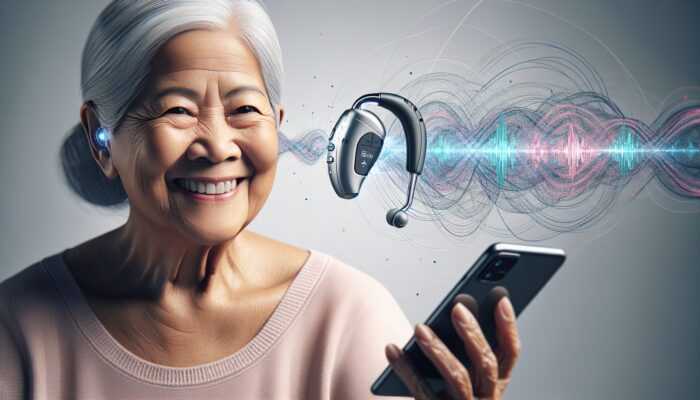In-Depth Exploration of Mild Hearing Loss Challenges and Solutions
Understanding Mild Hearing Loss: Symptoms and Their Impact

Living with mild hearing loss can present a subtle yet profound challenge, as the delicate sounds that enrich our daily lives gradually diminish. This condition is clinically defined within a hearing loss spectrum of 26 to 40 decibels, leading individuals to frequently struggle to understand soft-spoken words or miss crucial details during conversations. Those affected may notice that soft whispers become increasingly difficult to interpret, while background sounds can easily overshadow important discussions. The awareness of missing these subtle cues can be both frustrating and isolating. Timely identification of these symptoms plays a vital role, as early intervention using the best hearing aids for mild hearing loss can significantly enhance communication skills and improve overall life satisfaction.
Early recognition of these symptoms is paramount to prevent further deterioration of hearing abilities. Common indicators include difficulty hearing in noisy settings, a need for speakers to raise their voices, or experiencing tiredness after social events due to the effort required to hear. Such difficulties can lead to emotional distress, often resulting in feelings of social withdrawal. Providing comprehensive information about this prevalent condition is essential, as it motivates those impacted to seek the necessary assistance and solutions promptly.
Uncovering the Various Causes of Mild Hearing Loss
Investigating the causes of mild hearing loss unveils a wide range of potential contributors. Age-related changes are particularly significant, as the intricate components of the ear gradually lose their sensitivity over time. Moreover, prolonged exposure to loud environments—ranging from concerts to workplace settings—can considerably impair hearing ability with time. Genetic factors also play a crucial role, as certain hereditary conditions can heighten the risk of auditory decline. Additionally, other medical issues, such as persistent ear infections, otosclerosis, or long-term use of ototoxic medications, can aggravate or contribute to hearing impairments, complicating the situation even further.
Grasping these underlying causes is essential for individuals seeking effective remedies. By understanding the factors influencing their hearing loss, persons can make informed choices regarding the best hearing aids for mild hearing loss that meet their unique needs. For instance, someone whose hearing difficulties primarily result from aging may focus on devices that excel in amplifying sound, while those affected by noise-induced hearing loss might seek features specifically designed to minimise background noise.
The Urgent Importance of Early Intervention for Hearing Loss
Addressing mild hearing loss with immediate action cannot be overstated. Early intervention, especially through the use of hearing aids, can dramatically enhance the quality of life for those affected. Research indicates that individuals who take prompt steps are significantly more likely to experience improved social engagement and a lower risk of cognitive decline. When sounds are amplified and communication obstacles are reduced, users can fully partake in conversations, maintaining their connections with family and friends.
Consider the example of a young professional who starts to notice early signs of mild hearing loss. By proactively investing in the best hearing aids for mild hearing loss, they can continue their career development and maintain social connections without interruption. The ability to engage meaningfully at work and in personal relationships not only strengthens bonds but also supports overall mental well-being. The long-lasting benefits of early intervention are considerable, reinforcing the idea that taking timely action empowers individuals to lead richer, more fulfilling lives.
The Everyday Consequences of Mild Hearing Loss

Mild hearing loss can subtly yet profoundly alter the dynamics of everyday life. Individuals may discover that routine tasks—such as engaging in casual conversations with friends, attending family gatherings, or participating in professional meetings—become increasingly more arduous. This ongoing challenge can lead to feelings of frustration and isolation, as the inability to hear clearly may distance individuals from their social circles. What should be enjoyable interactions may morph into sources of anxiety, prompting some to withdraw from social engagements altogether.
Furthermore, the ramifications extend beyond personal relationships; they can significantly affect workplace productivity and professional interactions. Missing vital information during meetings or heavily relying on visual cues can create an uneven playing field for those with mild hearing loss. The emotional toll of these challenges can accumulate over time, leading to a decline in overall well-being. By exploring the best hearing aids for mild hearing loss, users can regain command over their daily activities, re-engaging fully with their surroundings and restoring their confidence in both social and professional environments.
Key Features to Look for in Hearing Aids for Mild Hearing Loss
Selecting Hearing Aids with Stylish and Discreet Designs for Optimal Comfort
For numerous individuals experiencing mild hearing loss, the aesthetic appeal of hearing aids is as important as their functional capabilities. The contemporary landscape of hearing aids has introduced discreet designs that offer sleek, nearly invisible options, allowing users to feel both comfortable and confident. These designs cater to those who wish to maintain their appearance without drawing attention to their hearing devices, ensuring they can navigate social situations with ease and grace.
With an extensive variety of styles available today, users can select models that seamlessly integrate into their lifestyles. Whether opting for behind-the-ear, in-the-ear, or completely-in-canal designs, the emphasis on discretion guarantees that wearing a hearing aid remains a non-intrusive experience. Such choices empower individuals to enhance their hearing capabilities without the stigma often associated with traditional devices. By choosing the best hearing aids for mild hearing loss that feature discreet designs, users can incorporate advanced technology into their daily lives, improving both functionality and style.
Leveraging Advanced Sound Processing for Superior Hearing Quality

The advancements in technology within hearing aids have fundamentally transformed how individuals with mild hearing loss perceive sound. Modern hearing aids now incorporate advanced sound processing capabilities specifically designed to enhance speech clarity while effectively reducing background noise. This technology proves particularly advantageous for users who often find themselves in settings where multiple sounds compete for attention, such as crowded restaurants or bustling public spaces.
These sophisticated systems operate by analysing the surrounding acoustic environment and adjusting amplification levels in real-time. For instance, during a conversation, the hearing aid can automatically suppress background noise, enabling users to focus on the speaker. This feature is especially beneficial for those attending social gatherings or working in environments that necessitate active listening. The integration of advanced sound processing technologies into the best hearing aids for mild hearing loss significantly enriches the overall auditory experience, fostering meaningful communication and interaction.
Customizing Hearing Aids with Flexible Settings for Tailored Use
Each individual’s hearing requirements are unique, making the ability to customise hearing aids essential for achieving optimal performance. Many modern devices feature adjustable settings that can be tailored to the user’s personal preferences and various environments. This flexibility ensures that users can fine-tune their hearing aids to suit different listening situations, whether in a serene home setting or a bustling public area.
Some devices even offer smartphone connectivity, allowing users to effortlessly adjust settings via an application. This convenience simplifies the process of switching between different listening modes, ensuring that the hearing aid operates optimally in any given context. The availability of customisable features in the best hearing aids for mild hearing loss empowers users to take command of their auditory experiences, significantly enhancing their quality of life.
Prioritising Longevity: The Importance of Long Battery Life
Reliability stands as a paramount concern when it comes to hearing aids, and extended battery life is a feature that many users highly appreciate. The best hearing aids for mild hearing loss typically incorporate innovative battery technology, ensuring prolonged usage without the constant need for recharging or replacing batteries. This feature is particularly vital for users who depend on their devices throughout the day, enabling them to engage fully in social, work, and leisure activities without interruption.
Many modern hearing aids now provide rechargeable options, removing the necessity for disposable batteries altogether. Users can enjoy the convenience of simply placing their devices in a charging dock overnight, ensuring they are ready for daily use. The combination of extended battery life and user-friendly charging solutions greatly enhances the experience for individuals with mild hearing loss, allowing them to focus on what truly matters—connecting with the world around them.
Highly Rated Hearing Aid Models for Mild Hearing Loss
In-Depth Overview of Model A: A Leading Choice for Hearing Enhancement
When examining the best hearing aids for mild hearing loss, Model A frequently stands out as a premier option due to its remarkable fusion of stylish design and advanced functionality. This model is renowned for its sleek aesthetics, providing users with a fashionable alternative that does not compromise on auditory performance. Equipped with state-of-the-art technology specifically designed for individuals experiencing mild hearing loss, this device significantly enhances sound clarity while effectively minimising distracting background noise.
In addition to its aesthetic appeal, Model A boasts user-friendly controls that enable individuals to easily adjust settings according to their listening environment. This adaptability makes it an excellent choice for those navigating diverse audio situations, whether in a quiet café or a lively family gathering. Comfort during extended wear is another critical aspect of Model A, ensuring it remains a reliable companion for daily use.
Model B: A Dependable Solution for Everyday Hearing Needs
For those in search of a reliable hearing aid, Model B is often recognised as a top-tier option. One of its standout attributes is its exceptional battery life, tailored for users who require a dependable device that lasts throughout the day. This model is particularly suited for individuals who may forget to recharge or replace batteries regularly, ensuring they stay connected to their environment without disruption.
Model B’s intuitive controls simplify navigation, allowing users to adjust settings with ease and confidence. This user-friendly approach is essential, especially for those who may not possess extensive technological expertise. By selecting Model B, users can anticipate a durable and practical solution that enriches their daily communication experiences, making it an ideal selection among the best hearing aids for mild hearing loss currently available.
Exploring the Features of Model C: Customisation at Your Fingertips
Model C distinguishes itself with its customisable sound settings, providing users the ability to refine their auditory experiences based on personal preferences. This model offers a comfortable fit, ensuring that users can wear it throughout the day without discomfort. The capacity to adjust sound profiles enables individuals to optimise their hearing in various settings, whether engaged in tranquil conversations or navigating noisy public spaces.
The design of Model C also prioritises user satisfaction, integrating features that enhance both comfort and usability. Many users appreciate the seamless incorporation of advanced technology, allowing for a personalised hearing experience. For those seeking a tailored solution to their hearing needs, Model C has earned recognition as one of the best hearing aids for mild hearing loss, offering a comprehensive solution for everyday living.
Model D: The Discreet Performer for Subtle Hearing Support
Model D’s compact size makes it an attractive choice for those who value discretion alongside performance. Users frequently commend this model for its effective noise reduction capabilities, which are particularly beneficial for individuals with mild hearing loss who wish to enjoy enhanced sound quality without drawing attention to their devices. The technology integrated into Model D emphasises amplifying speech while minimising distracting background noise, resulting in clearer and more enjoyable conversations.
In addition to its functional advantages, the thoughtful design of Model D ensures comfort and ease of wear. Users can expect a lightweight and unobtrusive experience, enabling them to fully engage in their surroundings without the worry of their hearing aid being overly noticeable. The combination of effectiveness and subtlety positions Model D as a strong candidate among the best hearing aids for mild hearing loss, appealing to those who appreciate both aesthetics and performance.
Model E: Exceptional Sound Quality and User-Friendliness
Model E excels in delivering superior sound clarity along with intuitive usability, making it an ideal choice for individuals with mild hearing loss. Users frequently express that the sound quality provided by Model E significantly enhances their auditory experiences, allowing for deeper engagement in conversations and enjoyment of music or natural sounds without distortion.
The straightforward controls of Model E ensure that users can quickly and easily adjust settings, accommodating those who may lack extensive experience with technology. This accessibility is crucial in making hearing aids approachable for all users. By emphasising ease of use and exceptional sound quality, Model E stands out as one of the best options available for the best hearing aids for mild hearing loss, enabling users to embrace the beauty of life’s sounds with newfound confidence.
Significant Benefits of Using Hearing Aids for Mild Hearing Loss
Transforming Communication Effectiveness with Hearing Aids
One of the most significant advantages of employing hearing aids for mild hearing loss is the substantial enhancement of communication abilities. Individuals who invest in the best hearing aids for mild hearing loss often discover that they can amplify soft sounds that were once inaudible, dramatically transforming their interactions. This heightened clarity fosters a more natural conversational flow, significantly reducing the need to repeatedly ask others to repeat themselves.
Moreover, enhanced communication nurtures deeper relationships. For instance, family gatherings or workplace meetings can evolve into less stressful and more enjoyable experiences when individuals can fully engage in discussions. The reduction in misunderstandings and the ability to actively participate contributes to a richer social life. As users experience improved communication with their peers, they frequently report increased satisfaction in their relationships and interactions.
Encouraging Enhanced Social Interaction Through Effective Hearing Solutions
The advantages of hearing aids extend well beyond improved sound perception; they significantly enrich social interactions. Individuals experiencing mild hearing loss often struggle with feelings of isolation, particularly in group settings where background noise can overshadow conversations. By incorporating hearing aids into their daily routines, these barriers are effectively diminished, enabling active participation in social events and reducing the likelihood of feeling excluded or disconnected.
As users become more engaged socially, they often notice improvements in their mental health and emotional well-being. The ability to confidently interact with friends, family, and colleagues fosters a sense of belonging and community. Events that once felt intimidating may transform into opportunities for connection, laughter, and shared experiences. Investing in the best hearing aids for mild hearing loss not only enhances auditory perception but also revitalises social lives, creating a ripple effect of positivity that improves users’ overall quality of life.
Elevating Quality of Life Through the Use of Hearing Aids
Users consistently convey that the most significant benefit of using hearing aids is the overall enhancement of their quality of life. The experience of enjoying everyday sounds—such as music, nature, or even the simple joy of laughter—becomes accessible once again. Hearing aids equipped with state-of-the-art technology enable users to immerse themselves in their environments, regaining auditory experiences that may have been compromised due to mild hearing loss.
Beyond the auditory benefits, the psychological uplift associated with improved hearing is profound. Many users report feeling more self-assured and less anxious in social situations, leading to a more enriching lifestyle. Whether it’s relishing a concert, participating in community events, or simply enjoying a peaceful stroll in nature, hearing aids enhance every aspect of life. By selecting the best hearing aids for mild hearing loss, individuals are not merely investing in sound; they are investing in a more vibrant and fulfilling existence.
Crucial Considerations for Selecting the Ideal Hearing Aid
Conducting a Thorough Assessment of Your Unique Hearing Needs
Choosing the right hearing aid begins with a comprehensive evaluation of your individual hearing needs. A professional hearing assessment is an essential first step, providing valuable insights into the specific level and type of hearing loss you may be experiencing. This evaluation serves as a foundation for selecting a device that caters to your unique auditory requirements.
Typically, the assessment encompasses a series of tests that evaluate your hearing across various frequencies. Gaining clarity on your hearing profile will facilitate navigation through the vast array of options available in the market, allowing you to determine which features are most pertinent to your situation. For example, you might find that you need a device with advanced noise cancellation capabilities, which can significantly improve your listening experience. By prioritising professional evaluation, you can make informed decisions and select the best hearing aids for mild hearing loss that align with your everyday needs.
Considering Lifestyle Factors in Your Hearing Aid Selection
Your lifestyle is a vital aspect in determining the ideal hearing aid for your requirements. It’s crucial to evaluate your daily activities, social engagements, and the typical environments where you will use your hearing aids. For instance, if you frequently find yourself in social gatherings, you may prefer devices equipped with exceptional sound clarity and noise reduction features. Conversely, if your lifestyle leans towards quieter settings, consider models that excel in amplifying soft sounds effectively.
Additionally, consider the physical characteristics of the devices. If you lead an active lifestyle or participate in sports, you might favour models that offer durability and sweat resistance. Understanding these lifestyle factors will guide you toward selecting a hearing aid that not only meets your auditory needs but also fits seamlessly into your daily routine. By doing so, you maximise the chances of receiving optimal benefits from the best hearing aids for mild hearing loss, ensuring they integrate effortlessly into your life.
Taking Advantage of Trial Periods to Ensure the Right Choice
One of the most effective strategies for ensuring that you select the right hearing aid is to take advantage of trial periods offered by numerous providers. Trying before you buy allows you to experience how a device performs in real-world situations, providing insight into how well it meets your auditory requirements. During this trial phase, pay close attention to various factors, including comfort, sound quality, and the ease of adjusting settings.
This hands-on experience is invaluable, empowering you to make a well-informed decision based on your personal preferences rather than relying solely on marketing claims. Engage in conversations with family and friends, explore different environments, and assess how each model enhances your hearing experience. By adopting this proactive approach, you increase the likelihood of discovering the best hearing aids for mild hearing loss that will deliver long-term satisfaction and improved hearing.
Evaluating the Various Types of Hearing Aids Available
The market presents a broad array of hearing aid styles, and evaluating the different types is essential in finding the right fit for your needs. Common options include behind-the-ear (BTE), in-the-ear (ITE), and completely-in-canal (CIC) designs. Each type possesses its own unique advantages and considerations, which can greatly influence your decision-making process.
BTE models are generally larger but provide the benefit of superior sound amplification and longer battery life. ITE models offer a more discreet alternative while still delivering commendable sound quality. CIC styles, being the smallest, are nearly invisible but may face limitations in features due to their compact size. Understanding the pros and cons of each style will guide your selection process, ensuring that you choose a hearing aid that aligns with your lifestyle, comfort, and auditory requirements. Selecting from the best hearing aids for mild hearing loss available can significantly enhance your hearing experience, improving your daily life.
Understanding Costs and Exploring Insurance Coverage Options
Navigating the financial aspects of hearing aids is a vital step in the selection journey. The price range for hearing aids can vary significantly based on brand, technology, and features offered. Conducting thorough research into these costs will provide a clearer understanding of what to expect and facilitate proper budgeting. Moreover, comprehending your insurance coverage is crucial, as some plans may cover part or all of the expenses associated with hearing aids.
When considering options, take into account not only the initial purchase price but also the long-term value, including maintenance and warranty offerings. Some providers may offer additional services such as follow-up appointments or adjustments, which can enhance your device’s overall performance. By diligently researching costs and insurance coverage, you can make an informed decision, ensuring that you find the best hearing aids for mild hearing loss that align with your financial situation while providing optimal auditory support.
Commonly Asked Questions Regarding Mild Hearing Loss
What is classified as mild hearing loss?
Mild hearing loss is characterised as a hearing impairment where individuals experience difficulty hearing soft sounds, typically defined as a loss between 26 to 40 decibels. This condition can lead to missing parts of conversations and sounds across various environments.
Which hearing aids are best suited for mild hearing loss?
The best hearing aids for mild hearing loss vary based on individual needs, but popular models include those featuring discreet designs, advanced sound processing, and extended battery life, catering to diverse lifestyles and preferences.
How can I determine my need for hearing aids?
If you frequently struggle to hear conversations, find yourself asking others to repeat themselves, or have difficulty in noisy environments, it may be advisable to consult a hearing professional for a comprehensive assessment.
Are hearing aids uncomfortable to wear?
Many modern hearing aids are designed with user comfort as a priority. Selecting a model that fits well and aligns with your preferences is essential, as comfort can vary based on style and individual anatomy.
Is it possible to trial hearing aids before purchasing?
Yes, many hearing aid providers offer trial periods that allow you to test devices in real-world conditions, helping you assess their suitability for your needs prior to making a purchase.
What is the typical lifespan of hearing aid batteries?
The longevity of hearing aid batteries is influenced by factors such as usage and device features. Generally, traditional batteries last between 5 to 14 days, while rechargeable batteries can provide all-day use on a single charge.
Will my insurance cover the cost of hearing aids?
Insurance coverage for hearing aids varies by plan. Some policies may cover a portion of the cost, while others may not. It’s important to review your policy for specific details regarding coverage.
Can hearing aids positively affect my social life?
Absolutely! Hearing aids enhance sound clarity and communication, allowing users to engage more fully in social interactions, which leads to improved relationships and a richer social life.
What factors should I consider when selecting a hearing aid?
When choosing a hearing aid, consider your specific hearing needs, lifestyle, comfort, design, battery life, and cost. Consulting with a hearing professional can significantly assist in making the right choice.
How often should I have my hearing aids serviced?
Regular check-ups, ideally every six to twelve months, are recommended to ensure optimal performance of your hearing aids. These appointments allow for necessary adjustments and maintenance to enhance your listening experience.
Explore our world on X!
The post Best Hearing Aids for Mild Loss: Our Top Recommendations appeared first on The Microsuction Ear Wax Removal Network.



















